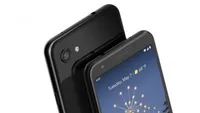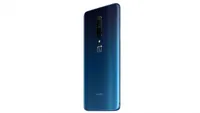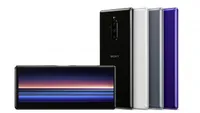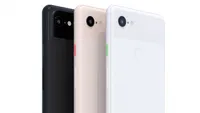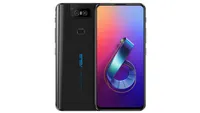Best camera phone 2020: the best phone cameras reviewed
The best camera phones on the market reviewed and rated.


“Your first 10,000 photographs are your worst,” said Henri Cartier-Bresson, one of the original masters of candid photography. Luckily for us, between all the Snapchats, WhatsApps and Instagram stories we’ve shared, not to mention those 9,999 selfies that didn’t quite make the cut, we’re likely well on our way to living our best photography life. But what’s the best camera phone to live that life with?
There are a lot of variables. Do you want one camera module to rule them all, as found on the Pixel 3, or a lot of lenses and zoom options phones like the Oppo Reno 10X's?
- This is the best mid-range phone in the world right now.
UPDATE: You'd think most brands would halt the release of new handsets in the midst of a global pandemic, but Huawei has other ideas. The Chinese tech giant swapped their usual launch event full of glitz and glamour for a live stream to announce the new P40 range. Building on the legacy of the Huawei P30, all of the new P40 models features5G and Kirin 990 processors. The P40 has a triple rear camera, 50-megapixel primary camera and an improved optical zoom. The P40 Pro has four camera and the P40 Pro Plus has a rather ridiculous five cameras. It's a strong offering from the giant, one that we'll have to test out properly in order to give you the full run-down of its strengths and weaknesses.
Do you just want to keep things simple and automatic like the iPhone Xs, or are you more into manual photography and RAW shooting - in which case, fire up the Huawei P30 Pro? Is pure photography your bag, or would you like to dabble in video too? We’ve tested the ten best smartphone cameras around so you can choose the right one for you.
- Are these a little out your price range? Check out our list of the best cheap phones
- Or have a look at our lists of best Compact Cameras or best instant cameras if you want something extra
- And, if you're a Samsung loyalist - check out our best Samsung phones
- best buys
- The shortlist
- Our expert
- test selection
- How we tested
- Test results
- Best overall
- Best value
- The rest compared
PreviousNext
While it might not be as versatile as the Xiaomi Mi 9, with only one lens instead of three, the Google Pixel 3A is a dream when it comes to pointing, shooting and getting a flagship quality picture almost every time. It’s simple to use, doesn’t overload users with shooting modes and is a solid performer when it comes to videos and selfies too.
The Huawei P30 Pro didn’t win every test we put our smartphones through, but it was the only phone that was at least good at everything, and excellent at specific things. Whether you’re shooting in low light, zooming across photos and videos, defocusing your background or diving into full manual photography, it’s an all-round excellent camera phone.
Get exclusive shortlists, celebrity interviews and the best deals on the products you care about, straight to your inbox.
The shortlist: best camera phone
The expert's view
22
Phones considered
26
Hours of testing
2
Best buys
1
Experts consulted
Every camera phone on test has its quirks. The Oppo Reno 10X Zoom doesn’t use its optical zoom for video, for example, and the Sony Xperia 1 falls down in when there are bright spots in the scene. The Pixel 3 and 3A are excellent picture takers but don’t have any optical zoom or ultrawide angle additional cameras, which hold them back for gig and landscape photography. And the iPhone just can’t cope when the lights drop.
The reason Huawei’s P30 Pro beat out the competition is primarily down to its versatility across photography and video.
Author Bio

Basil Kronfli
Basil Kronfli is a journalist of ten years’ standing, working across sites like TechRadar, Gizmodo and T3, as well as print titles including Metro, Shortlist and Total Film. He specialises in computing, smartphones and cameras, dabbling in kitchen tech, too.
Best camera phones: how we selected
These ten camera phones either come from ubiquitous manufacturers like Apple or Samsung, so provide a great frame of reference for the rest, or deliver something special. That might be the Asus ZenFone 6’s unique flip-out camera, which shoots the best selfies around, or Huawei and Oppo’s periscope zoom cameras, which get you closer to the action.
The main camera combinations also range from as few as one camera in the Pixel 3 and 3A, through to three cameras across most of the line-up.
With a huge amount of variability when it comes to shooting modes, each of the phones on test also has its software nuances. Sony’s camera, for example, has eye tracking for in-focus portraits, while Google and Huawei are the leaders when it comes to low-light photography. Their phones brighten up virtually pitch black conditions. Meanwhile, Huawei, Samsung and Xiaomi all offer tools to edit background blur effects after a shot is taken.
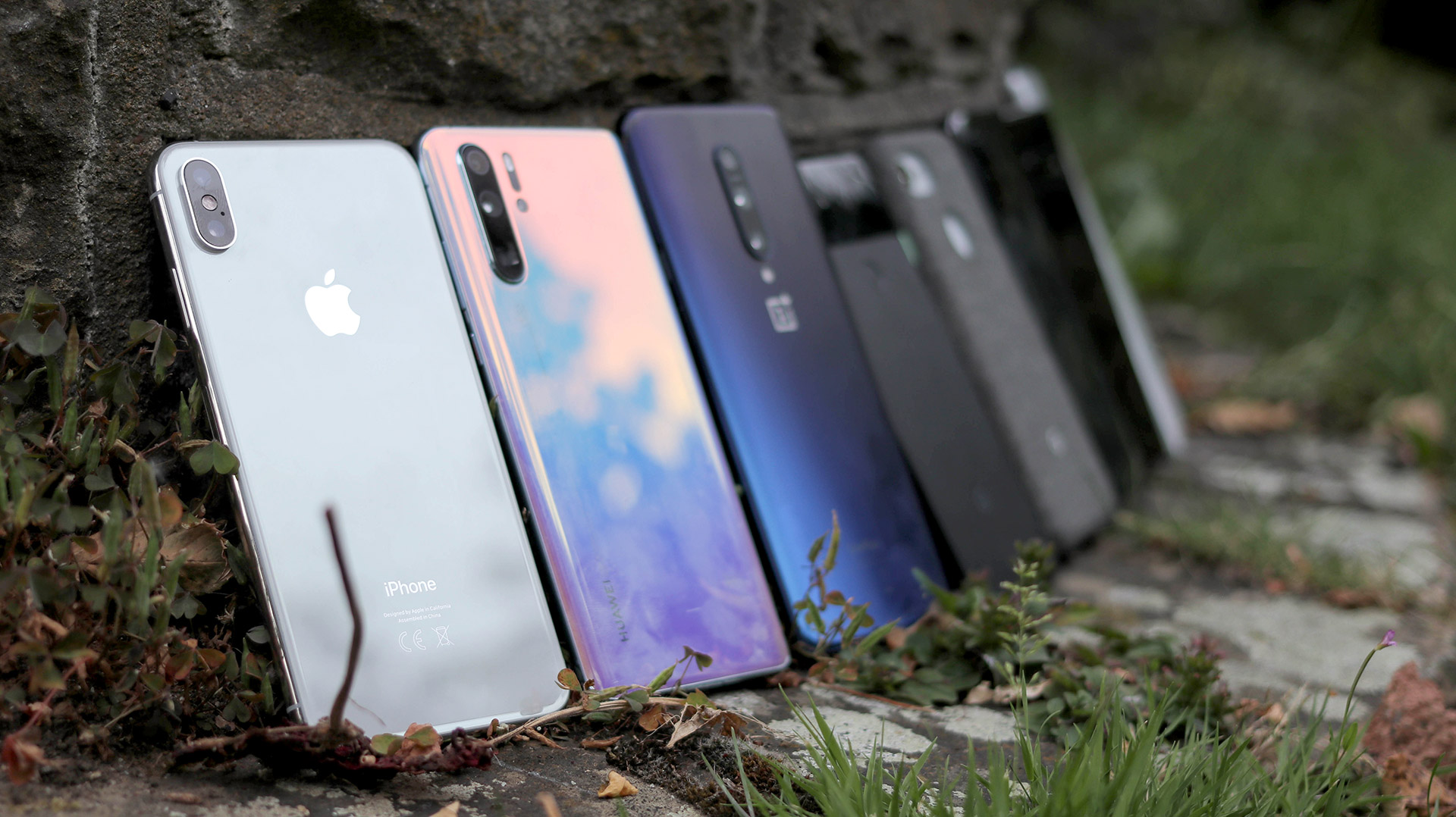
Most of the Android smartphones also offer manual control over your photography, perfect for enthusiasts. The iPhone and Pixel series don’t. They keep their interfaces very clean and simple instead.
Then there are other variables like videos and selfies. These aren’t the focus of this comparison, but they weighed in to inform our conclusions. Sony’s Cinema Pro app, for example, is an incredibly powerful tool for videographers, giving users full manual control over video recording, and an incredibly flat colour profile - perfect for editing footage captured on it.
As for theAsus ZenFone 6 - it uses its main camera as the front camera thanks to a motorised flip motion, so it’s little wonder it captures stunning wide and ultrawide angle selfies.
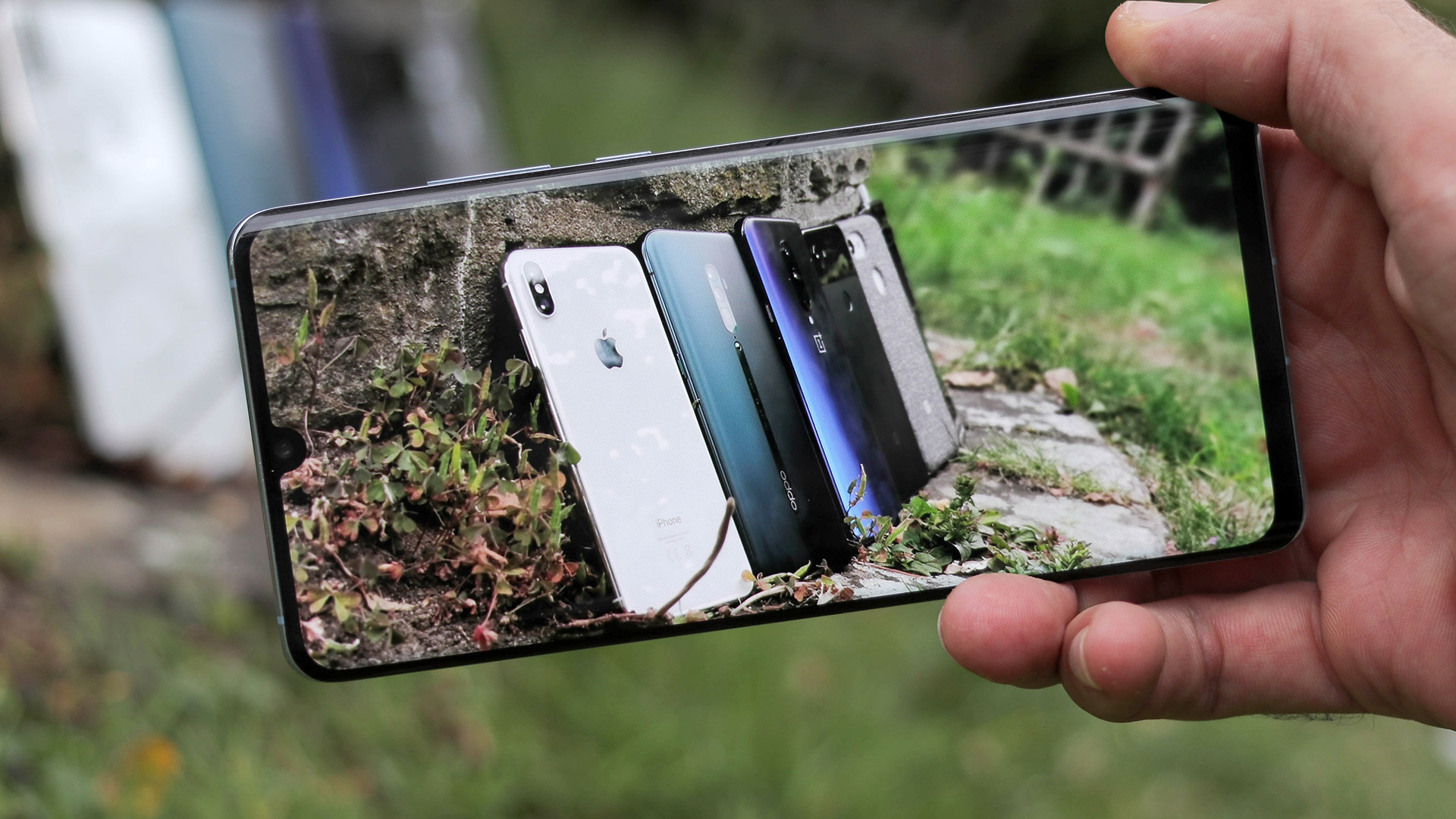
Best camera phones: how we tested
There are a standard set of pictures most people will capture when given a camera: macro (close-up photography), portraits, landscapes and action shots to name a few. When it comes to smartphones, you can add selfies to that list, as well as video. These are captured across a range of lighting conditions, and zoom ranges - and this is what we worked to emulate in our comparative review.
Portraits, for example, can be shot in automatic mode, or portrait mode. If you remember to fire up portrait mode, the phone will flatter faces by softening skin and blur out the background to mimic shots taken on a DSLR. As a result, we shot portraits in both automatic and portrait mode. We also captured them in good light, and very low light, and finally, with night mode fired up.

Another factor that will likely sway your buying decision is how close a phone can get you to the action. The Oppo Reno 10X Zoom, for example, has a 5x optical zoom. Meanwhile, the Pixel 3 series only has a digital zoom.
Digital zooms are inferior as they simply crop into the full-sized image and create a lower resolution shot. Meanwhile, optical zooms have lenses that act like magnifying glasses, so the image that the phone captures is both zoomed in and full-resolution. That’s why we tested the zoom ranges across all the phones, from the ultrawide angle many capture through to roughly 10x zoom.
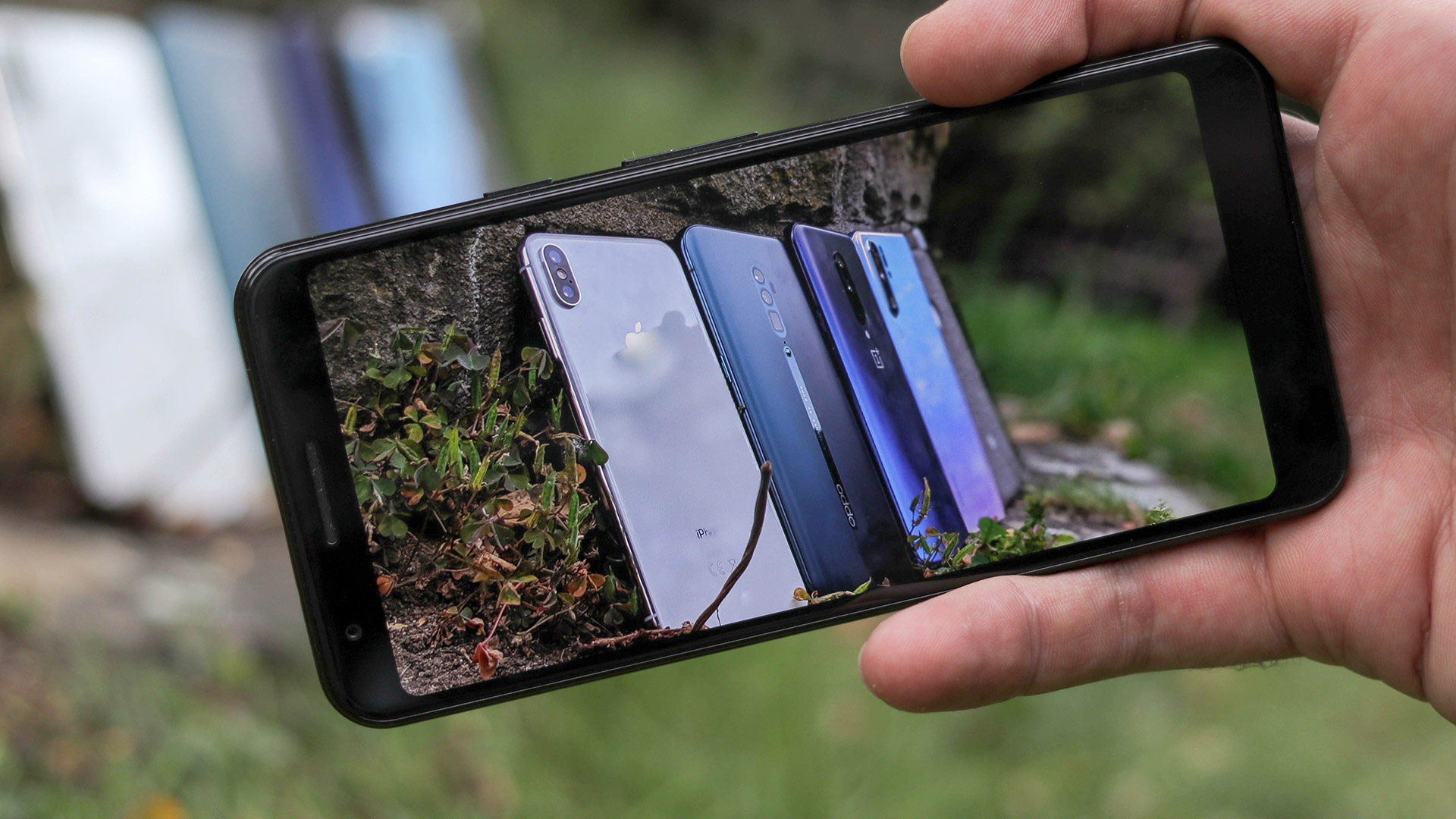
As for selfies, they’re a big deal, and not just for social media fans. Lifetime milestones like wedding receptions and graduation ceremonies see parents and grandparents huddling in front of selfie cameras across a range of lighting conditions.
That’s why we tested selfies outdoors and in the dark too. With some phones packing big pixel counts and autofocus, and others featuring front flashes to brighten things up - there’s a huge amount of variability in something as simple as a selfie camera.
All the phones in our round-up shoot up to 4K video with plenty of resolution and detail. That said, not all were created equal from a video point of view. We tested video across zoom ranges for example - and while the Oppo Reno 10X Zoom has a fantastic zoom for photos, it doesn’t for video. Meanwhile, the Huawei P30 Pro does. Image stabilisation is also a big deal, whether it’s optical (OIS) or electronic (EIS), so we made sure to give our test footage a bit of a wobble to put our cameras through their paces.
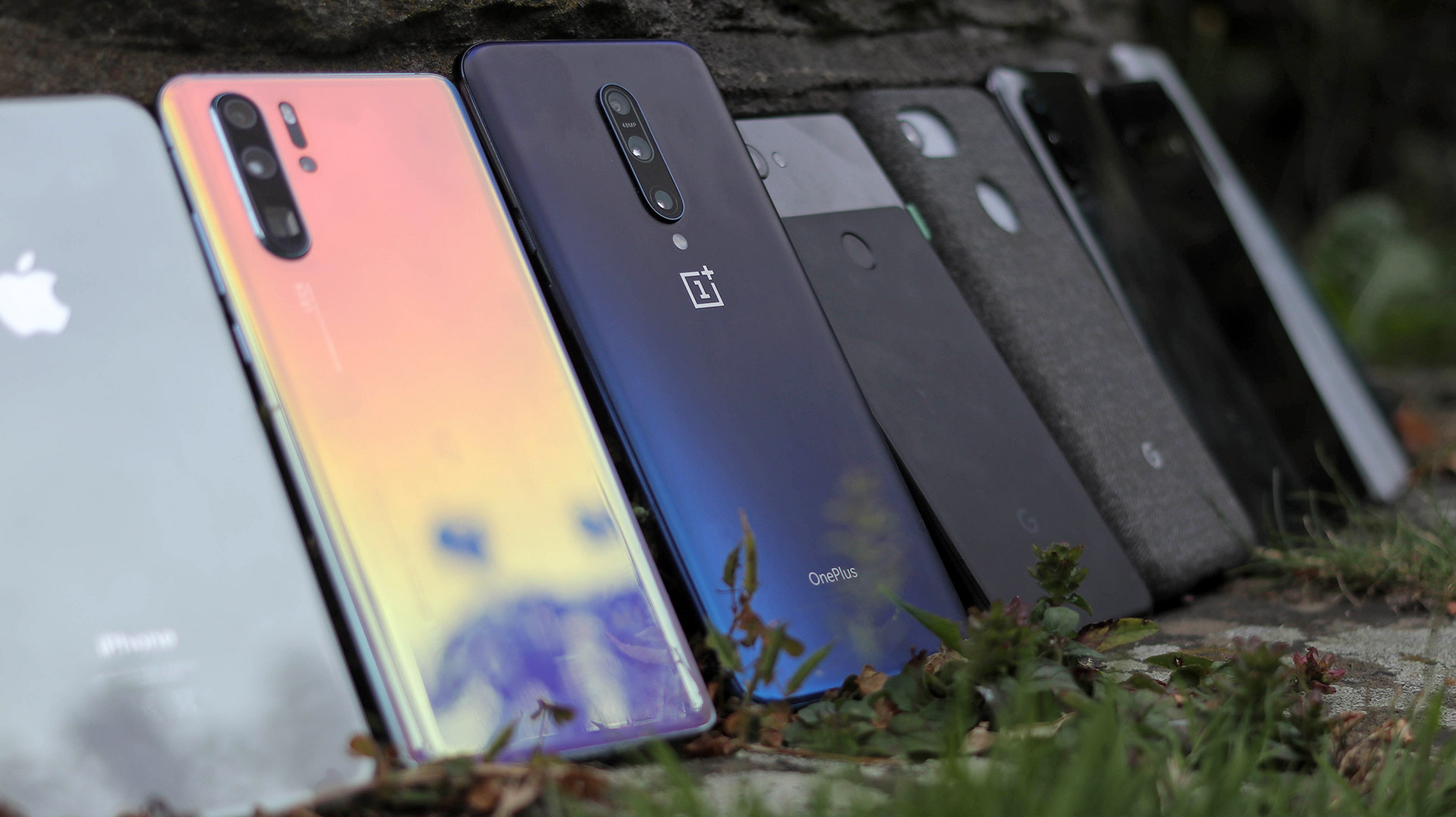
There are also variables not directly linked to the camera performance that might affect how you use your phone. For example, while the Sony Xperia 1 has a fantastic video capture mode, its battery life is mediocre. You’ll definitely want to plug in an external battery when filming with one for long periods.
Additionally, while the iPhone may not be the most versatile camera phone in our test, its popularity means a lot of accessories have been made for it, from clip-on lenses to external microphones and more.
With so many variables, and each offering excelling in a different way, our tests aimed to be both exhaustive from a photography point of view, and holistic from a usability point of view.
Best camera phone reviews: Test results
If you love taking pictures of people and want your portrait shots to look realistic but flattering, you can't get much better than the iPhone Xs or Google Pixel 3 or 3A. All three delivered great detail, a realistic amount of background blur and smooth, but not washed out skin detail. Huawei’s P30 Pro also performed well, however, produced an ethereal look to portraits, taking background blur to another level, which won’t be for everyone.
Drop the lights, and while the Pixels hold on to the top spot, the iPhone drops to the bottom of the pile. Interestingly, the Sony Xperia 1 produced the most atmospheric, accurate shot, which had both dark and light areas with very little grain. Meanwhile, the P30 Pro pulled out the most detail, brightening things up nicely, though it struggled with colour accuracy.

In terms of camera versatility, all our triple camera smartphones feature a wide, an ultrawide and a zoom lens, in turn, setting you up for success if you want to punch into your subject in (with) a pinch. The Huawei P30 Pro and Oppo Reno 10X Zoom are the best contenders as they both have roughly five times optical zooms. That said, the P30 Pro’s is significantly more versatile.
When it comes to pictures, if you’re less than around 1.5m from a subject, for example, the Reno 10X won’t let you zoom in on it. You have to take your shot with the wide-angle camera - cropping in when editing the picture. Meanwhile, the P30 Pro effortlessly switches between cameras so you can get the shot you want straight away. Also worth noting, the Reno 10X Zoom won't engage the optical zoom when shooting vide. The P30 Pro does.
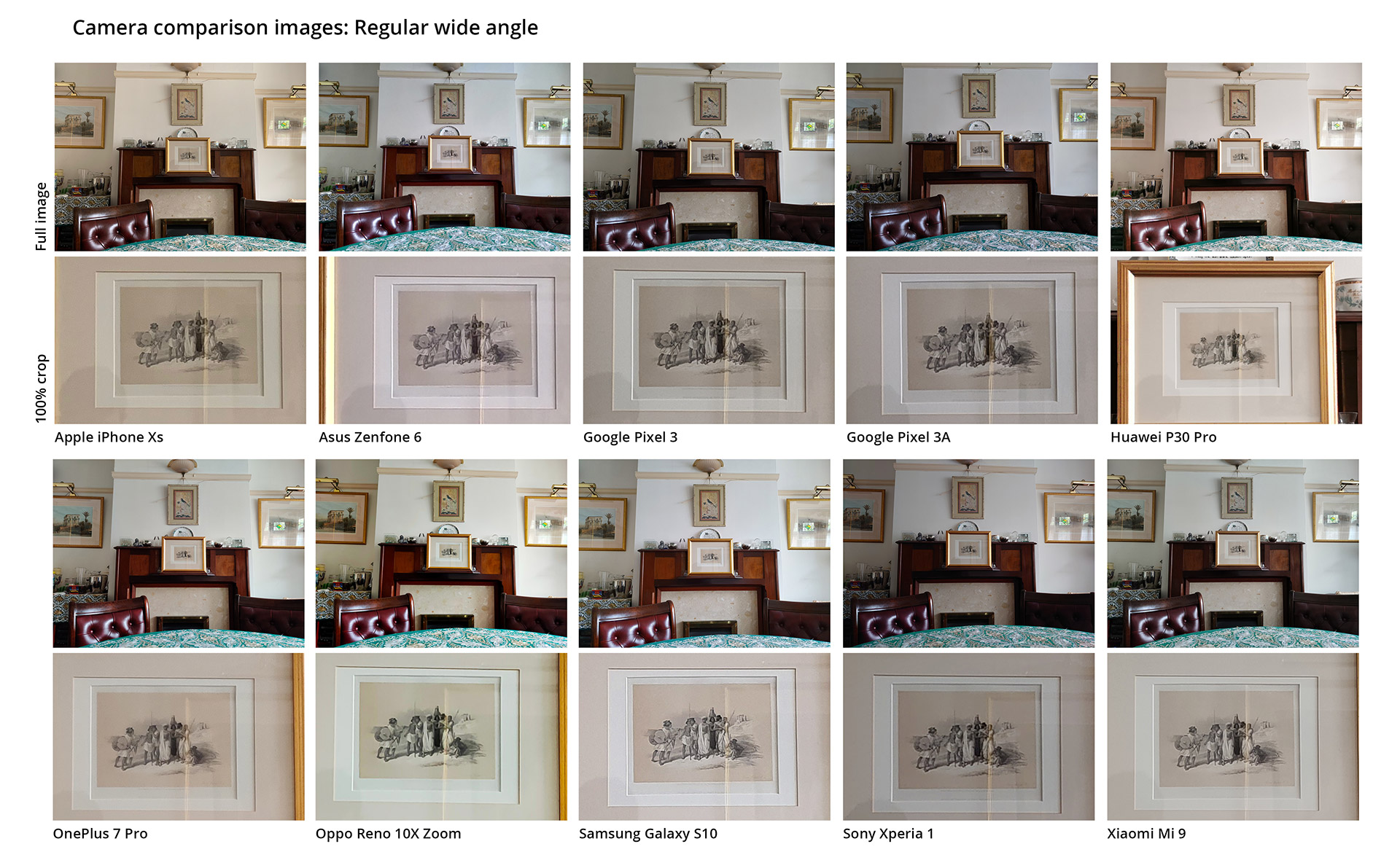
Meanwhile, neither the P30 Pro or the Reno 10X Zoom were on-par in our tests with the Google Pixel 3, iPhone Xs or Sony Xperia 1 when it came to colour accuracy. The P30 Pro warmed up most of the scenes a bit too much, while the Reno 10X Zoom ramped up the saturation, creating shots that look punchy but, at times, unnatural.
Meanwhile, the OnePlus 7 Pro and Xiaomi Mi 9 tend to sit pretty in the middle, along with the Asus ZenFone 6. They offer good value for money but seldom class-leading photography. The Galaxy S10 and the iPhone Xs were, meanwhile, consistently nearer the top of the pack.

There’s only really one winner when it comes to selfies, and that’s the Asus ZenFone 6. It uses the main camera as a selfie camera. If you’re into your videography, despite a couple of quirks, the Sony Xperia 1 is still our recommendation - just plug in a battery pack if you’re planning long shoots as its humble 3330mAh battery isn’t the best on test.
Best camera phone: overall
Huawei P30 Pro - Best all-rounder
Specs: Triple camera - 40MP wide angle (f/1.6) + 8MP 5x zoom (f/3.4) + 20MP ultrawide (f/2.2)
Huawei’s P30 Pro is the phone to get if you’re not sure what you’ll be taking pictures or videos of. It offers versatility in spades across its three cameras, and also features plenty of shooting modes, not to mention great video performance too.
Why does it win our test? It all starts with that triple camera set-up around the back and the versatility each camera delivers. The ultrawide angle is ideal for capturing landscapes with maximum impact, not to mention huge group shots. Meanwhile, the roughly five times zoom lens can outperform a human eye, get you to a front-row view at a gig, or up close and personal with wildlife from a safe distance.

The P30 Pro also has smart scene detection, so can capture shots with enough punch or pop to be Instagram-ready when fired up. Alternatively, you can go pro if you prefer - shoot in manual mode and capture RAW photos, then fine tune all the edits yourself in photography apps like Adobe Lightroom.
All the key modes - auto, pro, video and night mode work across all three cameras, unlike a lot of the competition, and photo quality is fundamentally strong across lighting conditions too. In fact, when shooting static objects, it can practically shoot in the dark, beating out even the Pixel 3’s Night Sight mode.
As for video capture, both optical and electronic image stabilisation work to great effect, and if you’re holding the phone steady, zooming in on subjects can make the P30 Pro feel like a spy cam. Audio capture is also respectable, and with excellent battery life the phone lasts all day, even with heavy camera use. And there’s plenty of room for all your photos and footage too.

In our tests, there were some areas the P30 Pro didn’t always beat the competition, specifically white balance. It had a tendency to warm things up a bit too much, making a cool scene look more sunkissed than it did in real life. Its portrait mode also ramps up background defocus to a point that looks almost ethereal at times. While impactful, anyone looking for portraits that actually resemble DSLRs might want to dive into the aperture mode and dial back the blur a touch.
Another area Huawei’s smartphone line in general might struggle is consumer confidence. The US has "blacklisted" Huawei, and it puts a question mark over whether it will get Android updates in the future. This situation is in progress.
At the time of writing this comparative review, Huawei is in the clear, as the ban on its partnership with Google has been temporarily lifted - however, the future is about as certain as the politics that dictates its outcomes. One thing Huawei has confirmed is that the P30 Pro and its current smartphone line-up will be getting security updates for the foreseeable future.
Huawei P30 Pro test shots
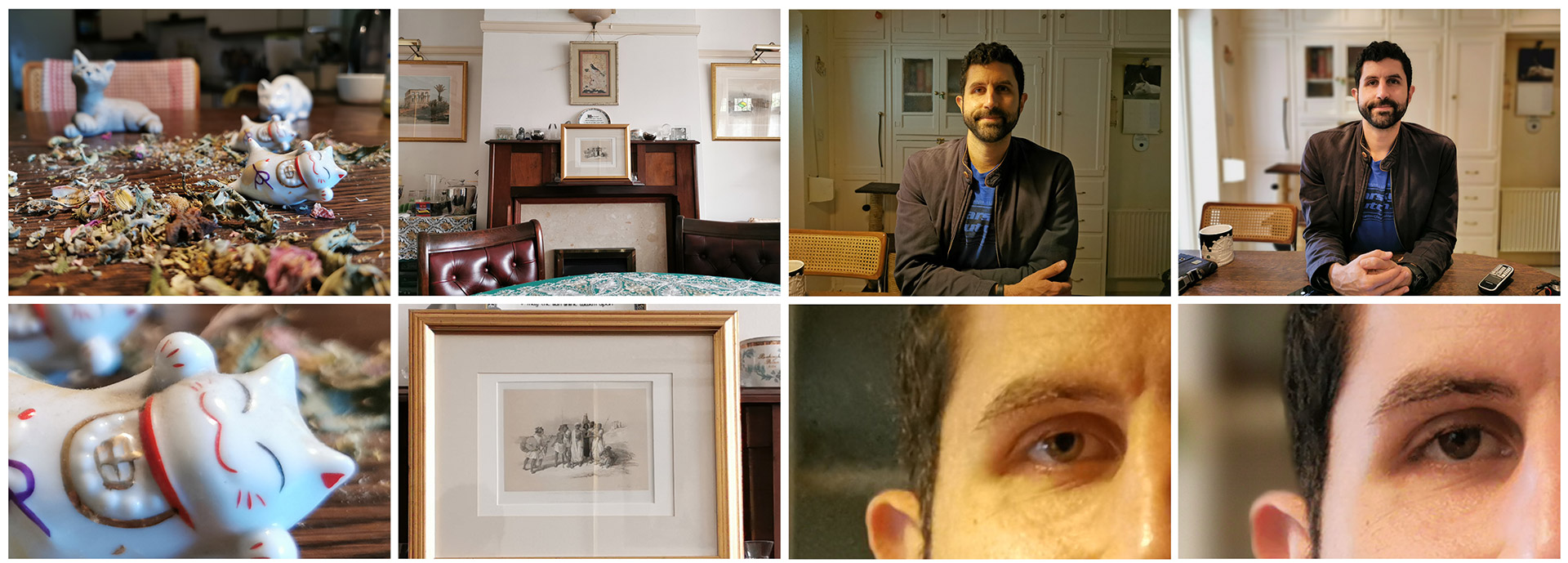
Best camera phone for value
Specs: Single-camera - 12.2MP wide angle (f/1.8)
The Pixel 3A does not have any of the fancy zooms or ultra wide angle cameras of the competition. But its single main camera captures excellent images and steady video time after time.
It all starts with Google’s very smart photo processing software, introduced on the original Pixel and refined over three generations. In the Pixel 3A, this is available for the first time at a midrange price.
The phone’s 12.2MP sensor and f/1.8 aperture lens may sound run-of-the-mill on paper, but once you take your shot, if you dive into the gallery, you can see the shot go from a 4/10 to a 9/10 as the image processing is applied.
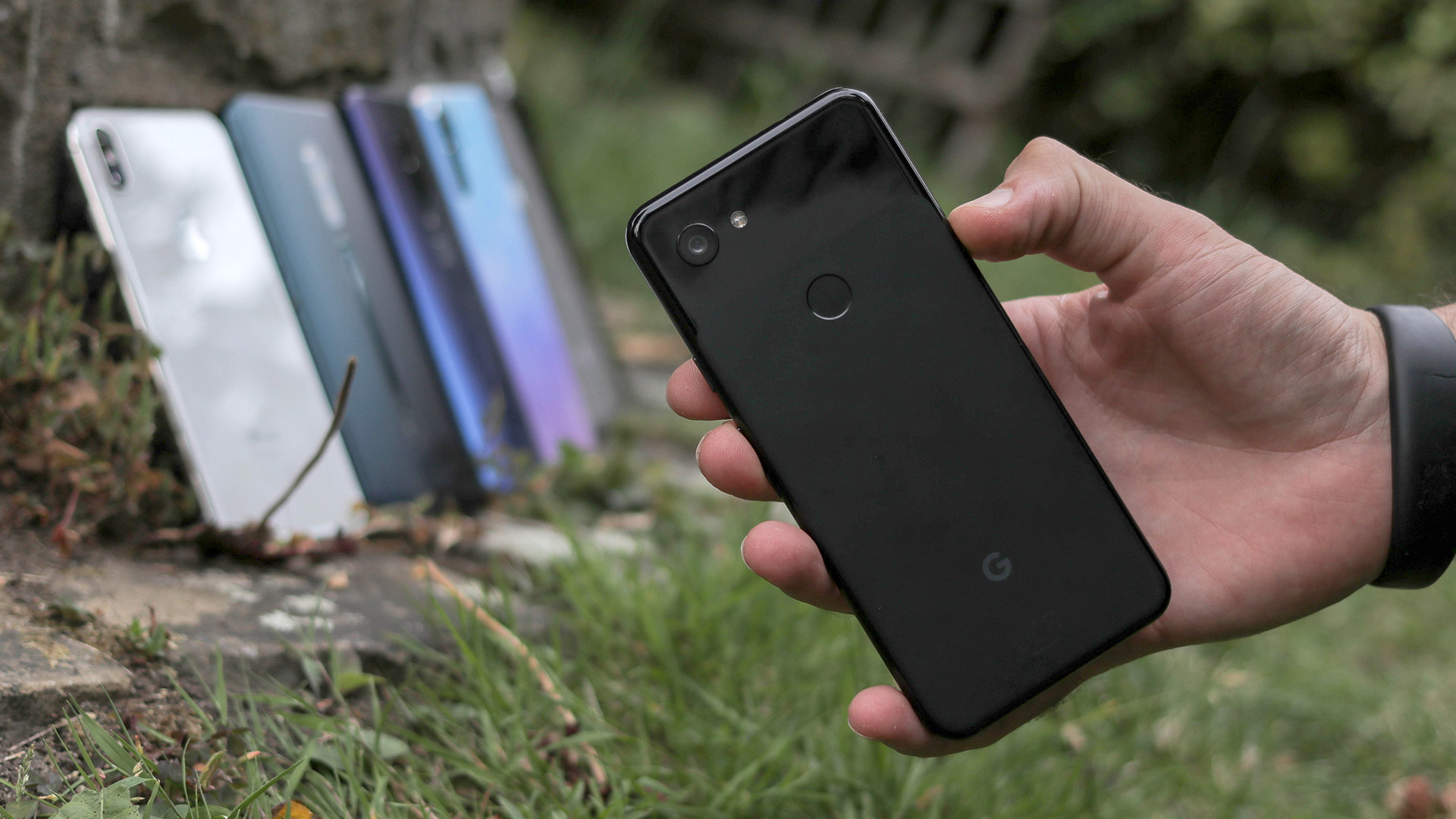
It’s also incredibly important to talk about Night Sight, Google’s long exposure mode. Giving Pixel smartphones the power to see in the dark - much like Huawei’s night mode, it has the capacity to bring atmospheric, poorly lit gothic churches to life and turn a nighttime cityscape into a buzzing metropolis.
Better still, all this Google magic isn’t just applied to photos taken on the phone’s main camera. The selfie camera takes stellar pictures too, whether shooting in backlit conditions or virtually pitch black environments. Skin tones look natural, faces look flattered but realistic, and backgrounds are very seldom too dark or too bright.

In our time with the phone, the one area it doesn’t quite stack up to the flagship Pixel 3 is the portrait mode. The artificial bokeh, for example, looks a touch less clean, and like the iPhone Xs, the Pixel 3A crops into the frame, forcing you to take a big step back unless you want an extreme close-up.
Despite this, it’s still a flagship-grade camera for £349. And while its mid-range internals and plastic body don’t scream premium, it’s up to any day-to-day task for casual smartphone users, and can even handle 2D and 3D gaming too.
Google Pixel 3A test shots
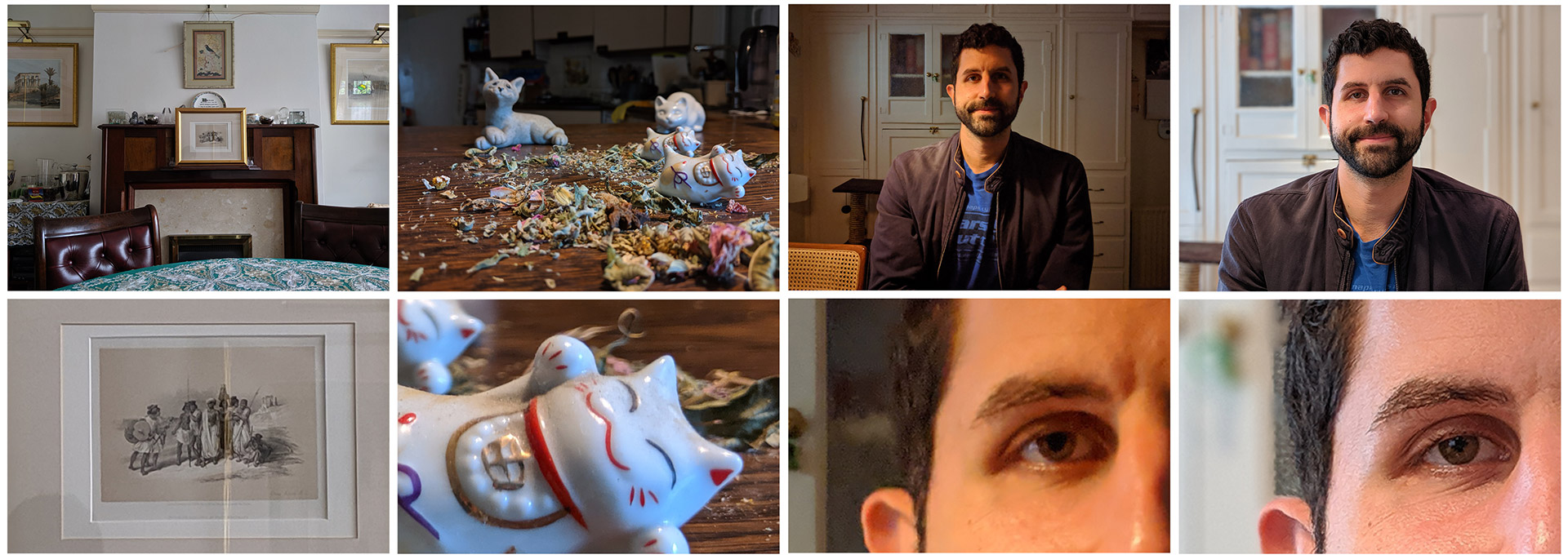
The rest compared
Apple iPhone Xs - Best for Apple fans
Specs: Dual camera - 12MP wide angle (f/1.8) + 12MP 2x zoom (f/2.4)
The iPhone Xs isn’t just a phone Apple fans have to ‘make do’ with. It’s an excellent camera in its own right.
For starters, it’s very simple to use, like the Pixel, and delivers a great shot almost every time. While its two times optical zoom may not be class-leading, it’s able to take excellent portrait shots with both front and rear cameras, and thanks to optical image stabilisation, it captures smooth video too.

Low light shooting is where the iPhone drops the ball. When the lights go down, things get a bit muddy. Paying in excess of £1,000 for a phone that can’t stack up to a £399 phone at night is a bitter pill to swallow. As for the rest of the phone, however, it marries a great screen, design and a premium interface with ample power and excellent app support too.
Our iPhone Xs review sample was provided by Three UK
Asus ZenFone 6 - Best for selfies
Specs: Dual camera - 48MP wide angle (f/1.8) + 13MP ultrawide (f/2.4)
Even if the Asus ZenFone 6 didn’t have an attention grabbing flip-out camera, it would still be great. Its battery life is stellar, it runs the latest version of Android, packs powerful flagship internals and at under £600, is great value for money too.
Couple that with the best selfie camera on the scene and this all-screen device has been a joy to use in our time with it.
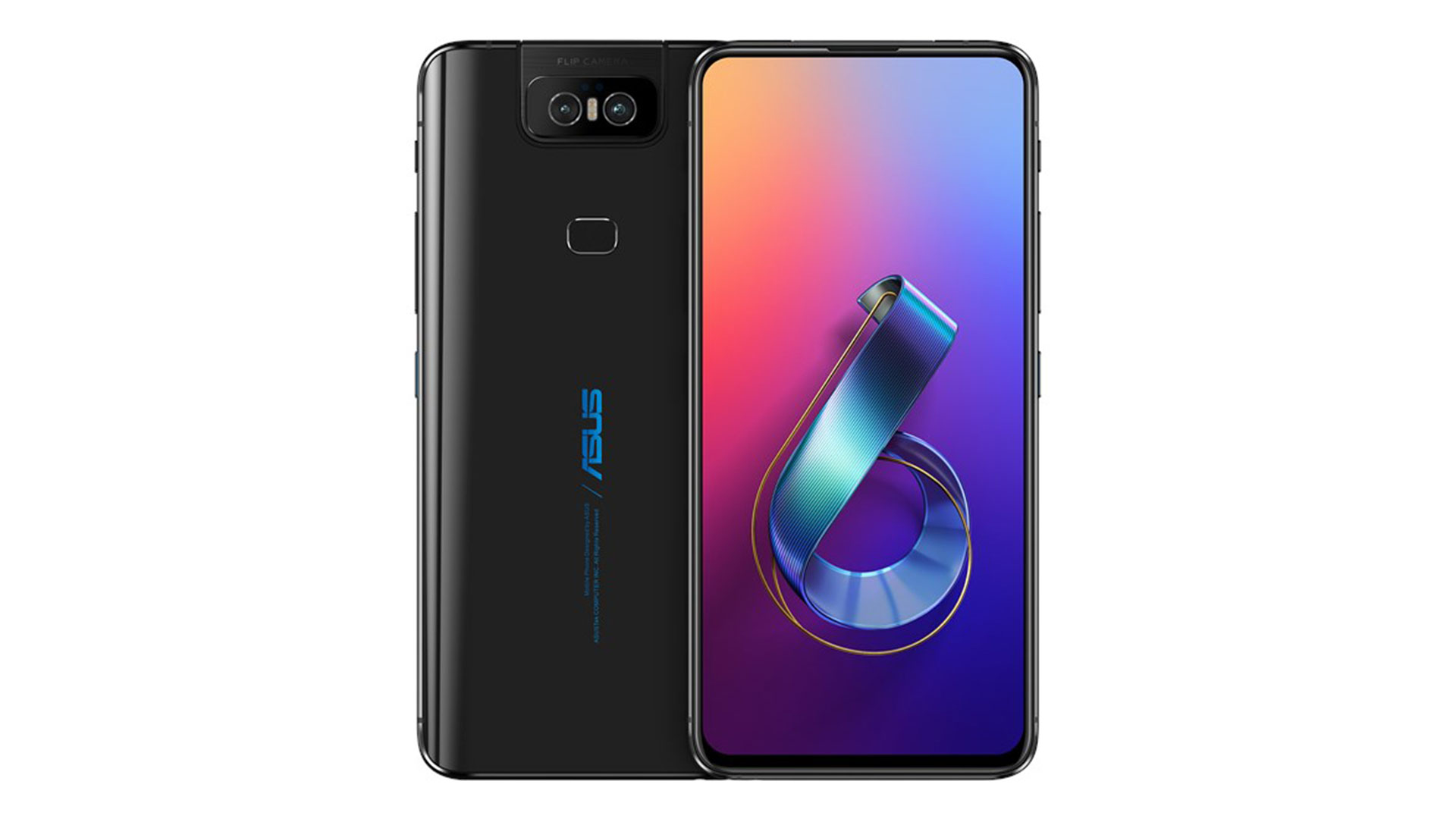
Its 48MP sensor can grab a huge amount of detail in well-lit conditions when shooting at full-resolution. The phone has all the modes you’d expect from a flagship, and the virtually bezel-free display looks great too. Across the board, it was able to compete with the big players even if it didn’t win in any of our traditional photography rounds, and its low light performance was also respectable.
What holds its camera back is the fact optical zoom and image stabilisation are both missing, so you can’t get as close to your subjects and video stabilisation isn’t fantastic.
Google Pixel 3 - Best point and shoot camera phone
Specs: Single-camera - 12.2MP wide angle (f/1.8)
If there was a competition for best single-camera smartphone around, the Google Pixel 3 would storm it. Just like the Pixel 3A, the flagship Google smartphone captures photos better than its specs would suggest it should - point, shoot and you’ve very likely nailed it.
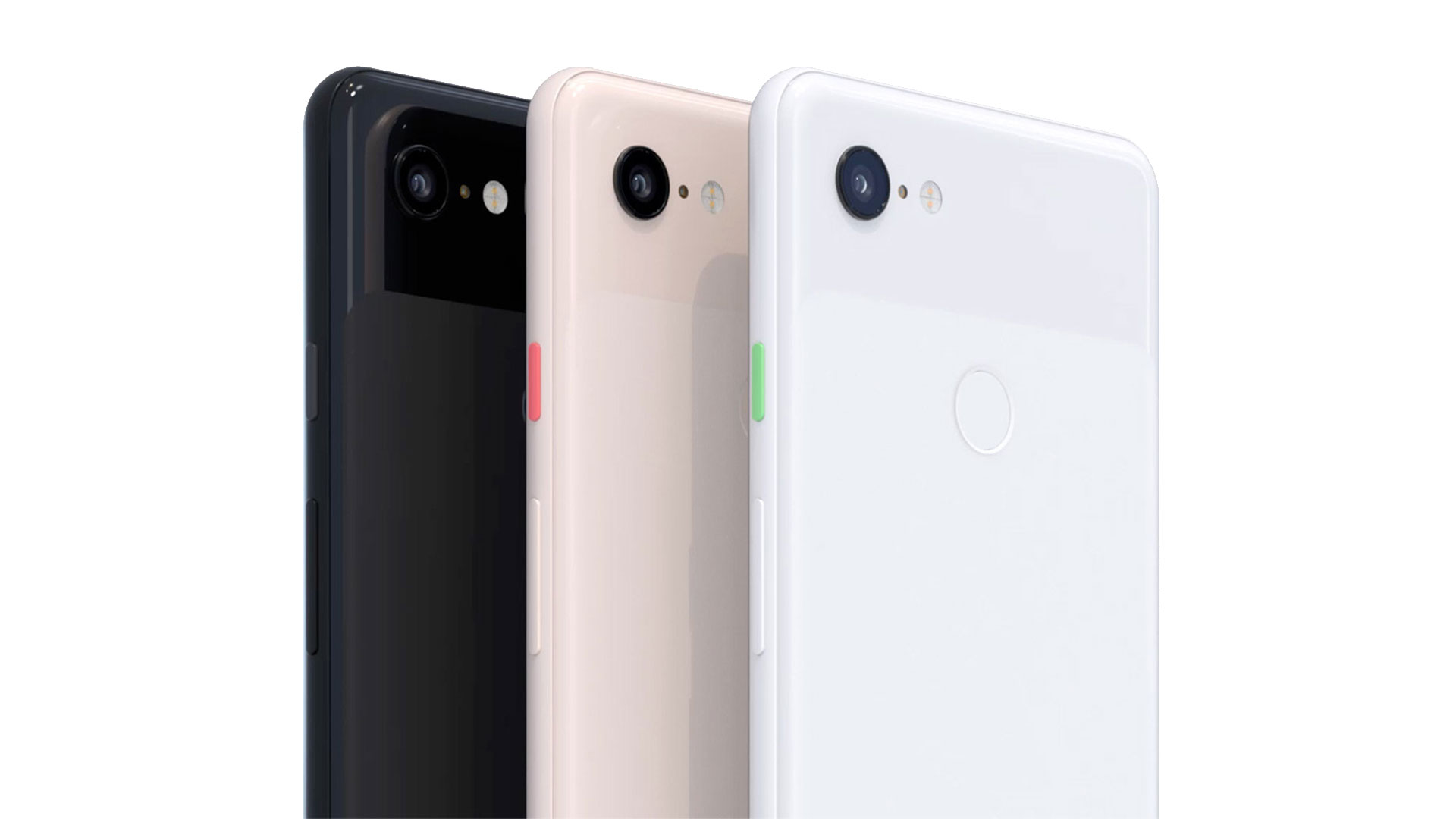
The main differences from a photography point between it and the 3A are the portrait mode, which serves up a wider angle on the Pixel 3, and the selfie cameras. Rather than pack just one front camera, the Pixel 3 has two, one with a regular field of view, the other with a wider angle so you can get all your friends in frame. The other key differences between the two come down to hardware. Google's Pixel 3 is a pocketable flagship through and through. From its powerful processor through to the glass front and back, stereo speakers and wireless charging, as well as water resistance - the Pixel 3 is a lot more than just a killer point and shoot camera.
OnePlus 7 Pro - Best for design
Specs: Triple camera - 48MP wide angle (f/1.6) + 8MP 3x zoom (f/2.4) + 16MP ultrawide (f/2.2)
The OnePlus 7 Pro raises the bar for the brand, introducing a triple camera system and across-the-board improvements.
The OnePlus 7 Pro's camera array has a wider angle view an iPhone or a Pixel, and gives you more resolution. This doesn’t necessarily mean better pictures, but it also gets you closer to the action than an iPhone Xs, with a three times optical zoom versus the iPhone’s 2x zoom.

It also has a night mode - though this only takes effect when shooting with the main camera. Video capture does up to 4K resolution, but its stabilisation could be better.
Despite the OnePlus 7 Pro’s imperfections, it can still capture shots that compete with the best out there. That said, the one area our unit had the most trouble by comparison to the competition was focus - whether shooting close-up macro shots or low-light portraits.
It could take a couple of attempts to lock-on. If you have £699 and want the best looking phone around, pick up the OnePlus 7 Pro. Meanwhile, if you want the best camera phone for that money, we’d probably go with the Oppo Reno 10X Zoom.
Oppo Reno 10X Zoom - Best for telephoto photography
Specs: Triple camera - 48MP wide angle (f/1.7) + 13MP 5x zoom (f/3) + 8MP ultrawide (f/2.2)
The Reno 10X Zoom is Oppo’s first mainstream flagship to hit the UK in a big way, and boy is it big. At over 200g, it’s the heaviest smartphone on test, and that has everything to do with its camera. The Reno 10X features a roughly five times optical zoom and gets a bit closer to the action than its main competition, the pricier Huawei P30 Pro.

It does ship with a few quirks. For starters, the optical zoom only engages when you take pictures, with video relying on the pretty crummy digital zoom. Additionally, even when taking photos, you can’t zoom in on objects that are less than around 1.5m away from you. The phone just fails to focus - you have to step back, or shoot with a wide angle and crop into your picture after your shot is taken. Finally, the Dazzle Color Mode is very, very full-on, delivering levels of zing we haven’t seen since our after school Nickelodeon days.
This can be turned off, though, and pictures the phone captures are sharp. The Reno 10X Zoom also grabs respectable dynamic range, so deals with backlit and unevenly lit conditions like a champ. And, boy, is that zoom powerful for photos when your focal point is far away. As a result, if you’re not too fussed about video and want maximum bang for under £700 - the Reno 10X Zoom is it.
Samsung Galaxy S10 - The iPhone of the Android world
Specs: Triple camera - 12MP wide angle (f/1.5-2.4) + 12MP 2x zoom (f/2.4) + 16MP ultrawide (f/2.2)
Samsung’s Galaxy S10 camera was consistently good to great, making for a safe bet, especially when it comes to close-up photography. It didn’t quite keep up with the Huawei P30 Pro and Pixel series when it came to low light photography, but still outperformed the iPhone Xs.
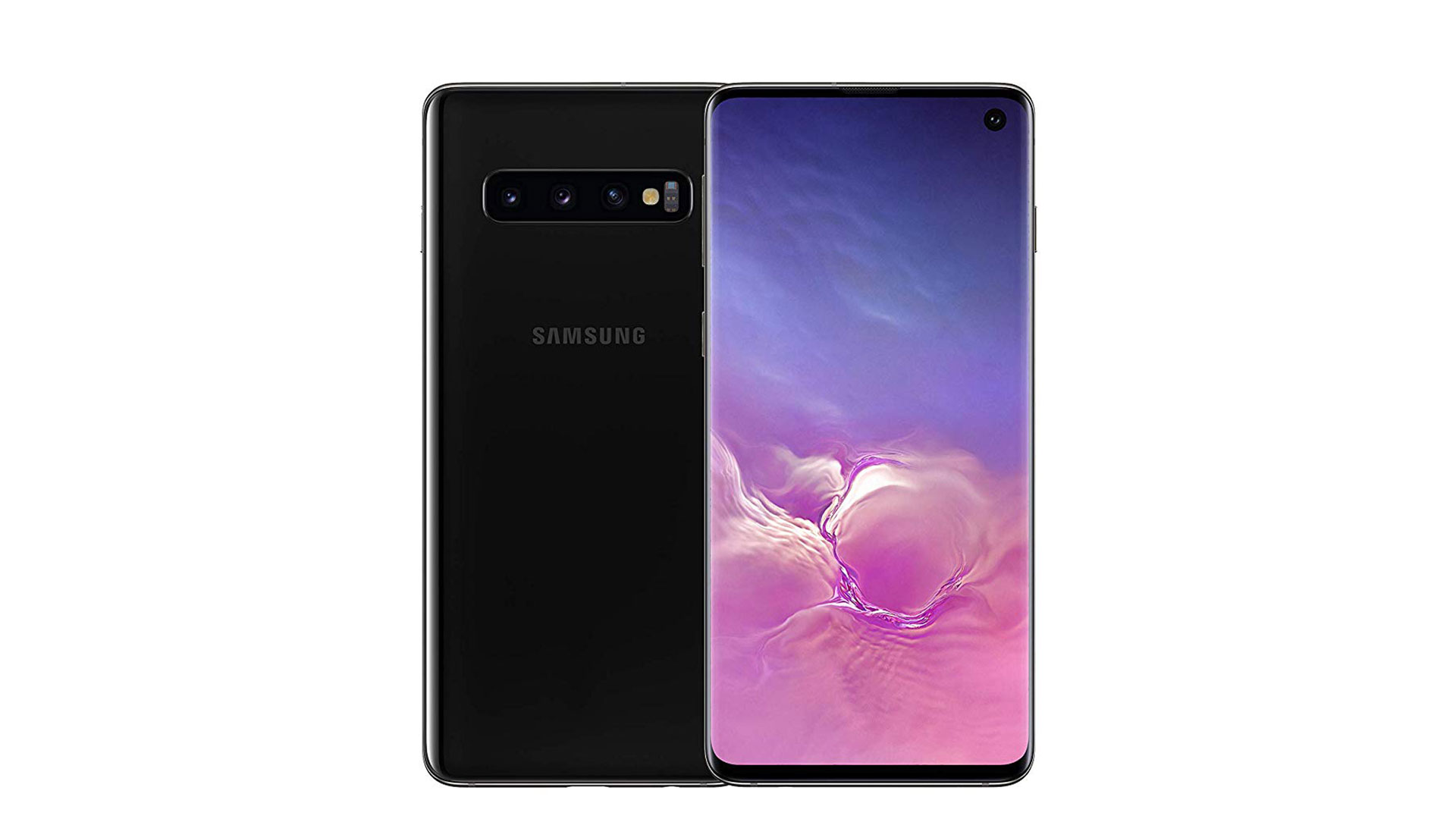
The camera was also able to deliver a good amount of detail at its widest angle, and the image stabilisation applied to video recording is excellent. In stark contrast to the Sony Xperia 1, the Galaxy S10 had a tendency to expose things a bit too much, especially when the lights went down.
With a lot of shooting modes, including full manual mode, in which you can capture RAW photos for maximum flexibility to edit them yourself, the Galaxy S10 is one of the best all-rounders on test. The Galaxy line is also the most popular Android flagship series, so accessories are abundant, from clip-on lenses to external mics like the Shure 88 MV+, which works better on the S10 than any other Android smartphone on-test.
Our Samsung Galaxy S10 review sample was provided by Vodafone UK
Samsung Galaxy Note 10 Plus - An S10 for creative types
Specs: Triple camera - 12MP wide angle (f/1.5-2.4) + 12MP 2x zoom (f/2.4) + 16MP ultrawide (f/2.2)
The Note 10 Plus is guaranteed to be at the very least, very good as it has a virtually identical camera setup as the Galaxy S10 series.
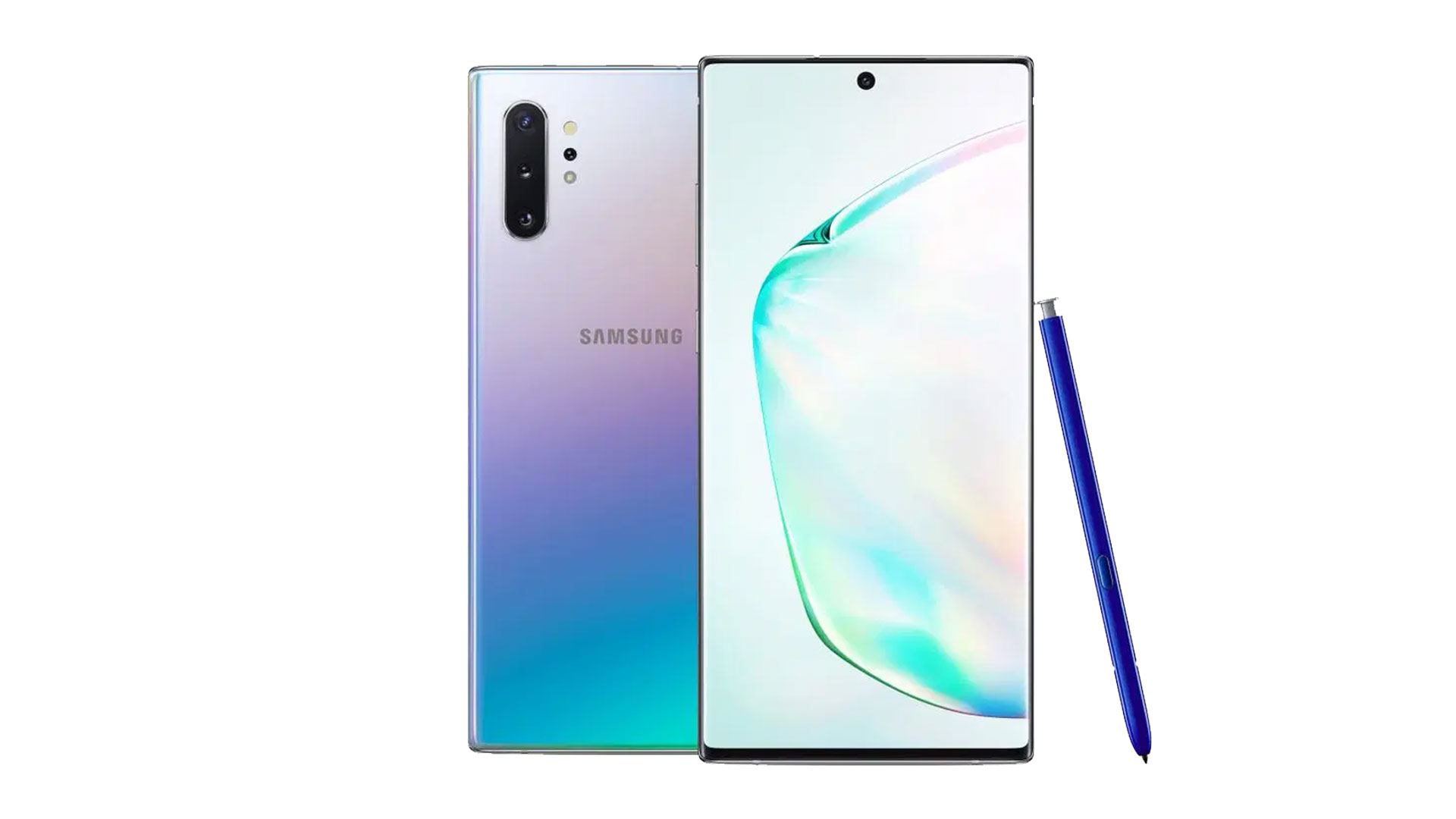
Its 12MP primary camera has a variable aperture of f/1.5 and 2.4, with a 26mm wide angle. Dual Pixel and phase detection autofocus (PDAF) ensure it locks onto its target quickly, and optical image stabilization (OIS) keeps things steady.
As with most camera phones, including the iPhone Xs-series, the Note 10 Plus includes a telephoto (zoom) camera, with a 12 MP sensor and a roughly 52mm equivalent focal length, not to mention OIS. A 50mm lens is what pro photographers tend to use for portraits, and in turn, the Note 10 Plus switches to it when you fire up portrait mode.
As for the ultrawide camera, it packs the biggest pixel-count with a 16 MP resolution and has an f/2.2 aperture. Its 12mm focal length gives shots and video captured using it a GoPro-esque fisheye distortion, but this can be corrected for in the settings.
Unlike the standard Galaxy S10, the Note 10 Plus features a fourth Time of Flight sensor for 3D depth detection.
With plenty of shooting modes, the Note 10 Plus’s camera covers the basics with Automatic, Video, Live Focus (portrait mode), Night, Slow Motion and Pro mode.
More off-the-wall modes include Live Focus Video, which blurs out the background of videos captured, Food mode, and even an Instagram mode. Overloaded? Indeed, but an excellent feature within Samsung’s camera UI gives you the ability to hide shooting modes you don’t use. Whether you’re a traditionalist of a wannabe influencer, you won’t be fumbling through modes you don’t use to get to the ones you do.
As for the Note 10 Plus’s video camera, it shoots up to 4K resolution at 60fps, with results looking excellent. The front camera can also record 4K 30fps too, which is impressive.
Sony Xperia 1 - Best for videographers
Specs: Triple camera - 12MP wide angle (f/1.6) + 12MP 2x zoom (f/2.4) + 12MP ultrawide (f/2.4)
The Sony Xperia 1 might be a videographer’s dream, but it does a great job with photos too, for the most part.
It dropped the ball in our tests in a couple of areas. The bokeh/portrait mode was unable to capture as much detail as most of the competition, and it didn’t handle scenes with highlights and lowlights well, often prioritising the darker areas and blowing out the lighter areas (turning them into blobs of white).
If Sony was able to improve the Xperia 1’s dynamic range, that would really help the phone out when facing such stiff competition from the likes of Apple, Google, Huawei and Samsung.
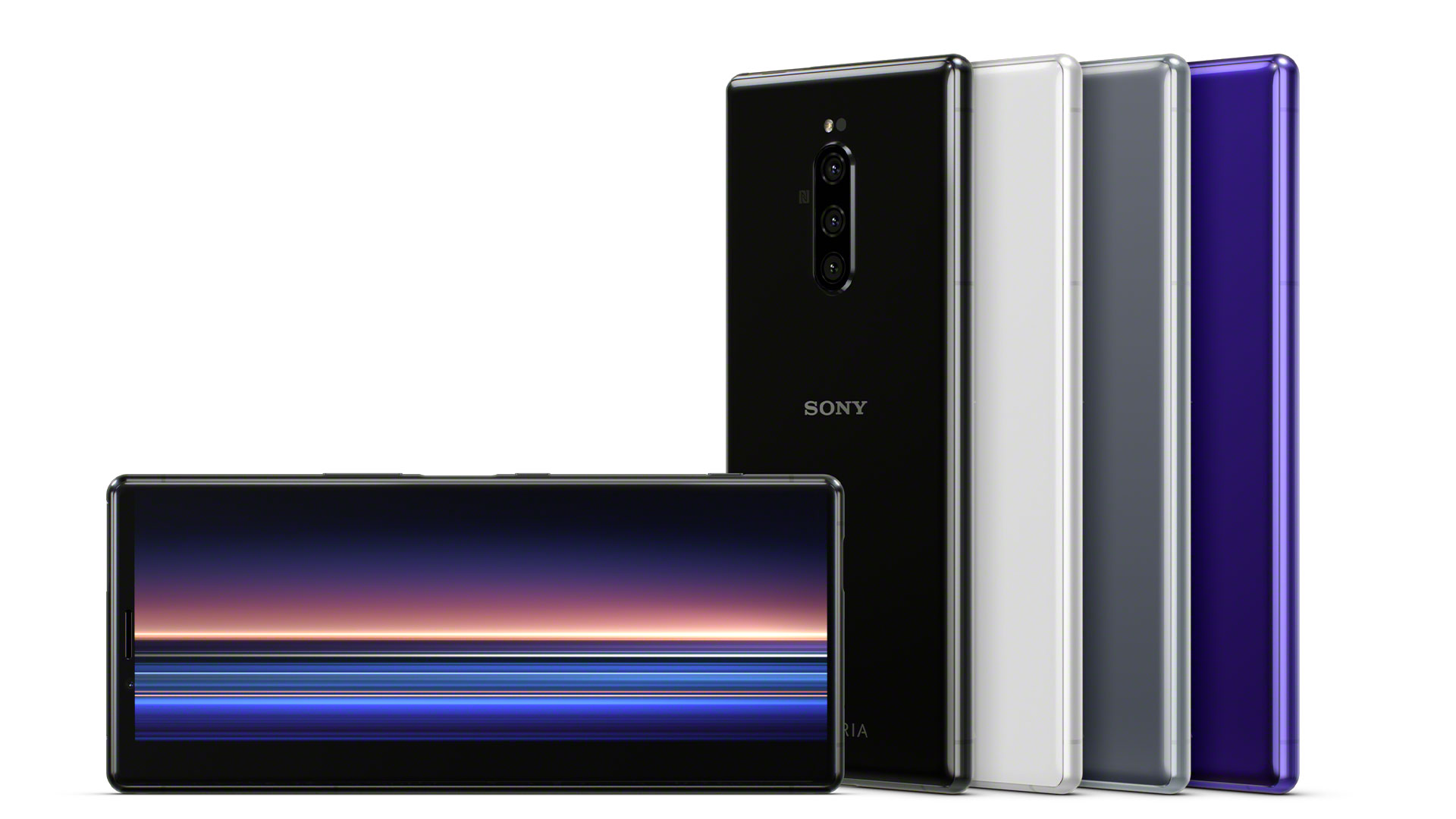
One area the Xperia 1 really did do well, however, was in poorly lit conditions. The camera doesn’t artificially brighten things up like some of the Android competition, and it doesn’t buckle like the iPhone Xs.Instead, it keeps noise down, and respects the shadows in a scene, thereby creating the most atmospheric low light shots of all our flagships.
Additionally, it excels at video. Cinema Pro video capture software gives shooters full control over their recording. This extends to manual-focus mid-recording, and it does it all with a gorgeously flat colour profile, so you can edit your videos to get the exact look you want.
Honor 20 Pro - High-end specs at a lower price
Specs: Triple camera - 48MP wide angle (f/1.4) + 8MP 3x zoom (f/2.4) + 16MP ultrawide (f/2.2) + 2MP macro (f/2.4)
The Honor 20 Pro has no fewer than four rear cameras. It's impressive given the phone’s sub-flagship price, and in one sense beats the Samsung Galaxy Note 10.

Its main camera is the same 48MP Sony IMX586 sensor used in the OnePlus 7 Pro. It shoots 12MP images by default, featuring a slightly narrower angle of view than most primary cameras with a 28mm equivalent focal length. That said, its aperture is very wide at f/1.4, which when combined with OIS and Honor and Huawei’s computational photography smarts, makes the Honor 20 Pro a low light superstar.
The phone’s telephoto camera also gets you closer than much of the competition, with a 3x zoom, rather than a 2x zoom, as found on the iPhone Xs and Samsung Galaxy S10-series. While the sensor clocks in at 8MP, the lens has an 80mm equivalent focal length and OIS.
Rounding off the trinity of core cameras and the Honor 20 Pro’s ultrawide sensor features the highest resolution of the bunch at 16MP, marrying with an f/2.2 lens. It gets plenty in frame with a 13mm equivalent focal length, and is a fixed-focus lens.
The Honor 20 Pro’s fourth camera is a very strange addition - a 2MP sensor combined with an f/2.4 macro lens. Yep, a whole camera just for incredibly close-up, low res images. How close? 4cm close. On paper, it’s a tough sell, and in real life it’s an even tougher one. Results from it are washed out and low resolution, so we’d avoid it. Still, the three main cameras perform admirably for the price - so let’s focus on them.
The Honor 20 Pro captures 4K video at up to 30fps, and with a 32MP selfie camera, grabs scarily sharp selfies. Luckily, there are plenty of beauty filters to smooth things out if you’re not a fan of pin-sharp pores, and there’s even live beautification for selfie video too.
Xiaomi Mi 9 - Best value smartphone
Specs: Triple camera - 48MP wide angle (f/1.8) + 12MP 2x zoom (f/2.2) + 16MP ultrawide (f/2.2)
Xiaomi’s Mi 9 was definitely the runner up behind the Pixel 3A for best value camera phone. As a whole package, it’s actually a better value smartphone.
It offers a lot more than the Pixel - three cameras, flagship power and a premium glass and metal design.

As a camera, it’s still good, delivering versatility with its wide 48MP sensor, which can capture a huge amount of detail in good light. The zoom camera is also useful and is engaged for portrait mode photos which works to great effect. Combined with an ultrawide angle lens, the Mi 9 is ideal for anyone who wants all bases covered. That said, there are a couple of areas it just doesn’t nail it.
Without optical image stabilisation, its 4K footage is a touch shaky. The phone’s point and shoot picture quality also falls behind that of the Pixel 3, and in low light, while it’s good, it isn’t great.
In turn, If you’re tossing up between it and the Pixel 3A, it will likely come down to what you’re after. If you consider yourself more of an enthusiast or pro photography and want a powerful phone, we’d suggest the Mi 9 - it has a manual mode and more granular control over your shots. If however you want the best out of the box point and shoot camera phone £399 will buy you, then it’s the Pixel 3A.
Xiaomi Mi 9T Pro - Another great mid-range option
Specs: Triple camera - 48MP wide angle (f/1.8) + 8MP 2x zoom (f/2.4) + 13MP ultrawide (f/2.3)
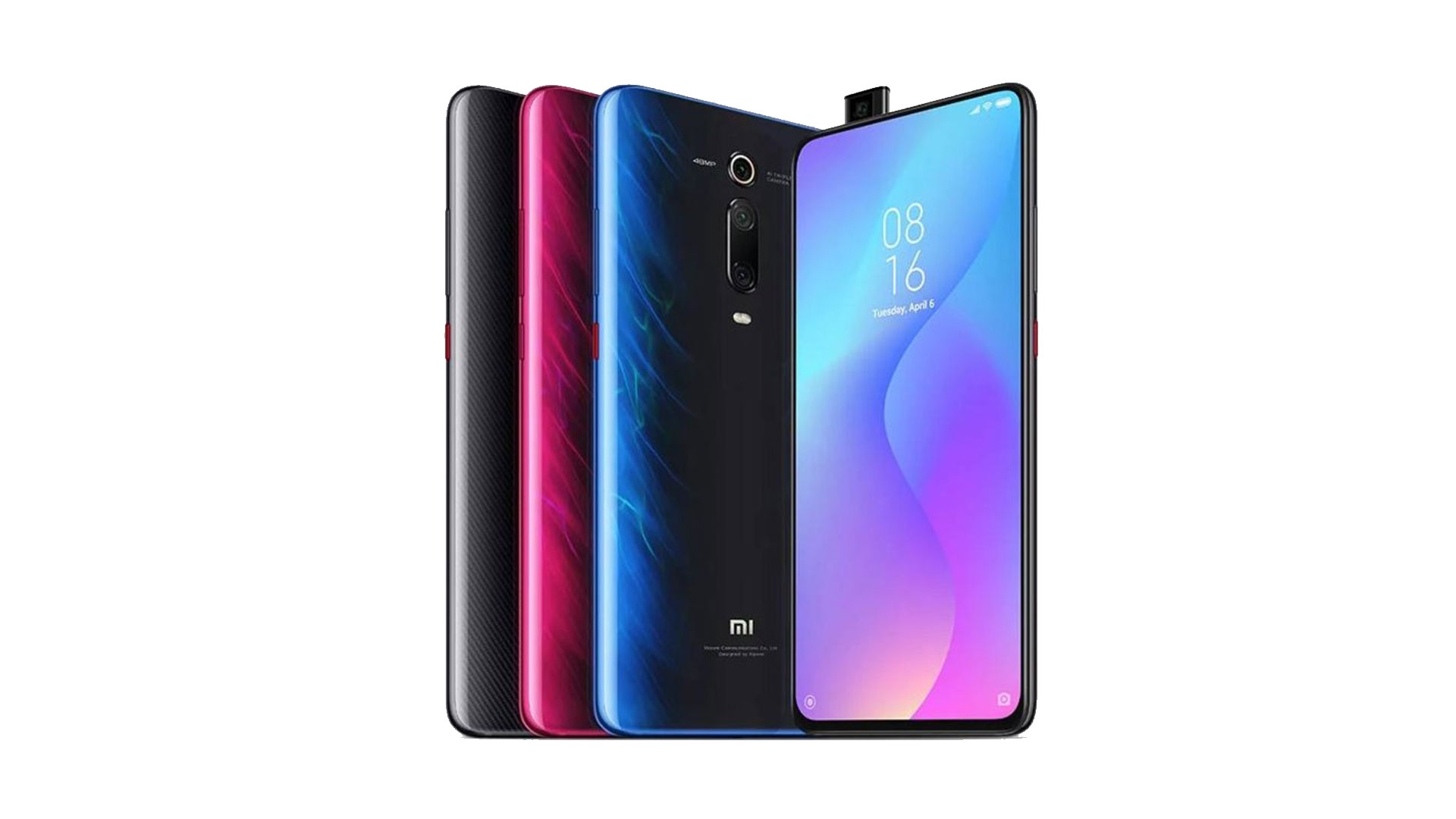
Xiaomi’s Mi 9T Pro isn’t necessarily in the running for the best camera phone title, but it’s a corker given it costs £499.
Its triple camera setup is comprised of a 48MP camera matched with a wide aperture f/1.75 lens. It’s a traditional wide angle with a 26mm equivalent focal length, though it doesn’t feature OIS like top-tier flagship competition like the Note 10 Plus.
Despite no OIS (optical stabilisation), its camera array is almost as versatile as Samsung’s finest. Its telephoto camera has an f/2.4 lens with a 53mm equivalent focal length. And like the Note 10 it defaults to the telephoto camera when you fire up portrait mode. Both the wide and ultrawide camera include phase detection autofocus, which helps them lock onto subjects across photos and videos in a flash.
As for the 13MP ultrawide camera, it’s has a fixed focus lens with an aperture of f/2.4 and a 12mm focal length. Fixed focus may not sound great, but for group shots and landscapes, the Mi 9T Pro’s ultrawide camera is perfect, producing minimal distortion and sharp subjects and sceneries.
Given the phone’s 48MP main sensor, you’d think it would capture 48MP images by default, but no. Like two of the best 5G phones around, the OnePlus 7 Pro and Oppo Reno 5G, the Xiaomi Mi 9T Pro combines pixels to capture images at 12MP by default.
Shooting modes are plentiful and include Auto, Portrait, 48MP, Panorama, Pro and Night. Enthusiasts take note, there’s no RAW support, but you can go full manual in the Pro mode.
As for video capture, the Mi 9T Pro outguns anything else at the price. In addition to capturing slow-motion video at up to 960fps, it also captures 4K footage at 60fps, which is incredibly good for the price.
Basil Kronfli is a journalist of ten years’ standing, working across sites like TechRadar, Gizmodo and T3, as well as print titles including Metro, Shortlist and Total Film. He specialises in computing, smartphones and cameras, dabbling in kitchen tech, too.
